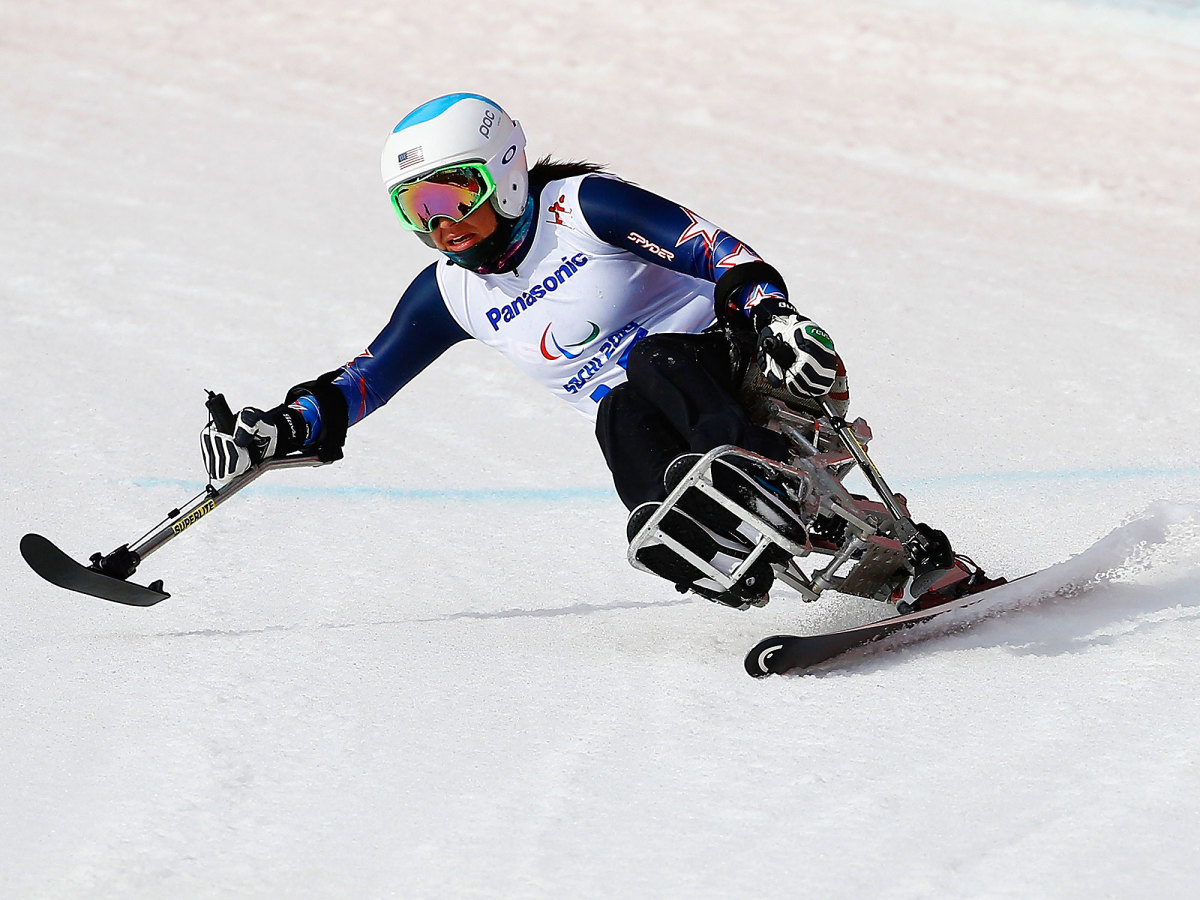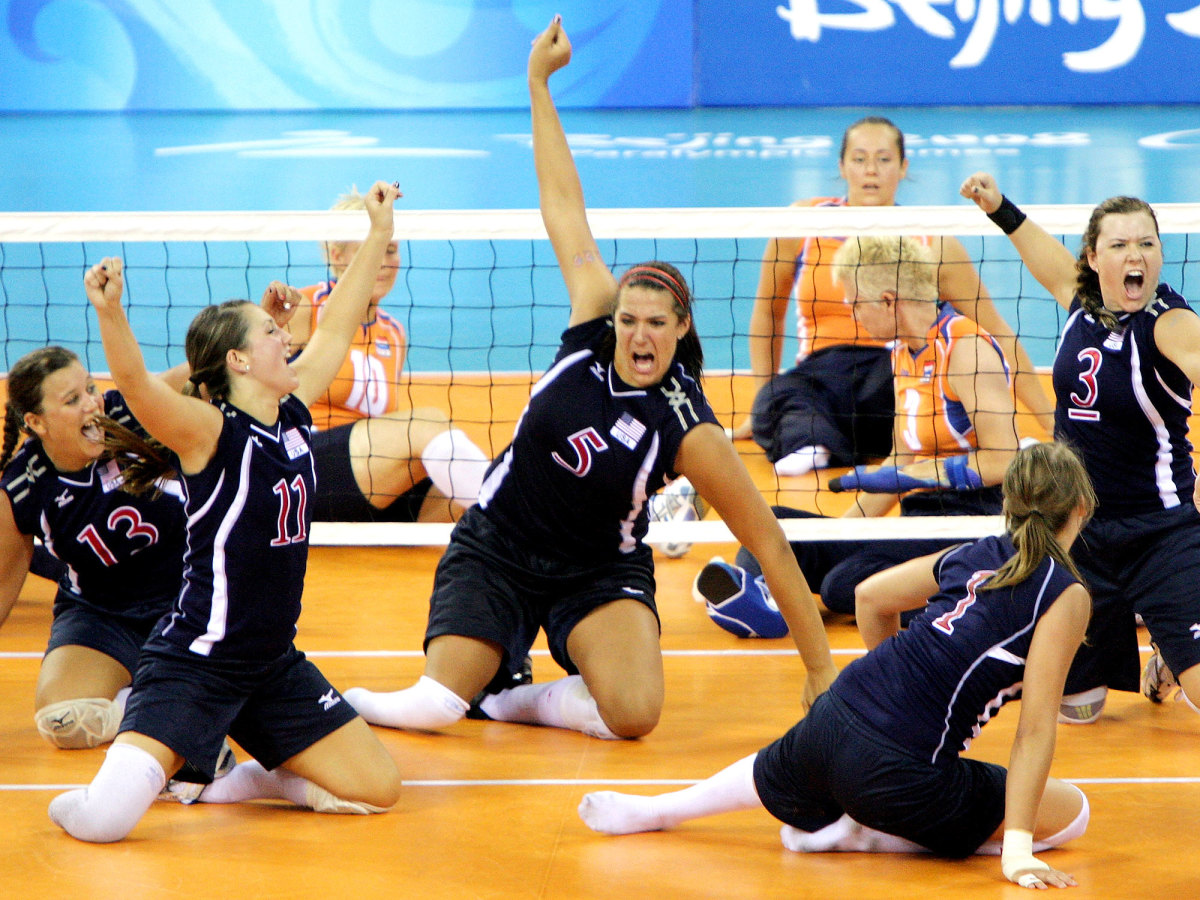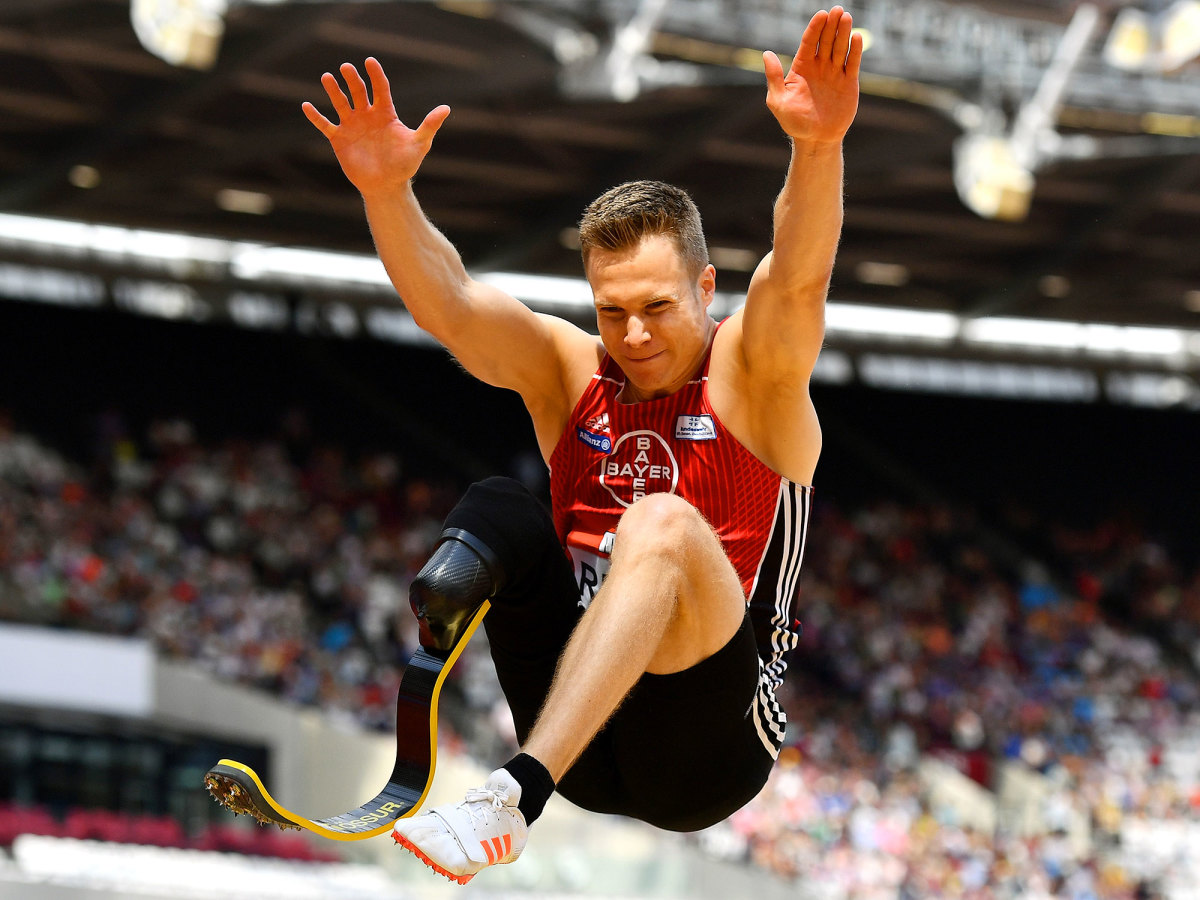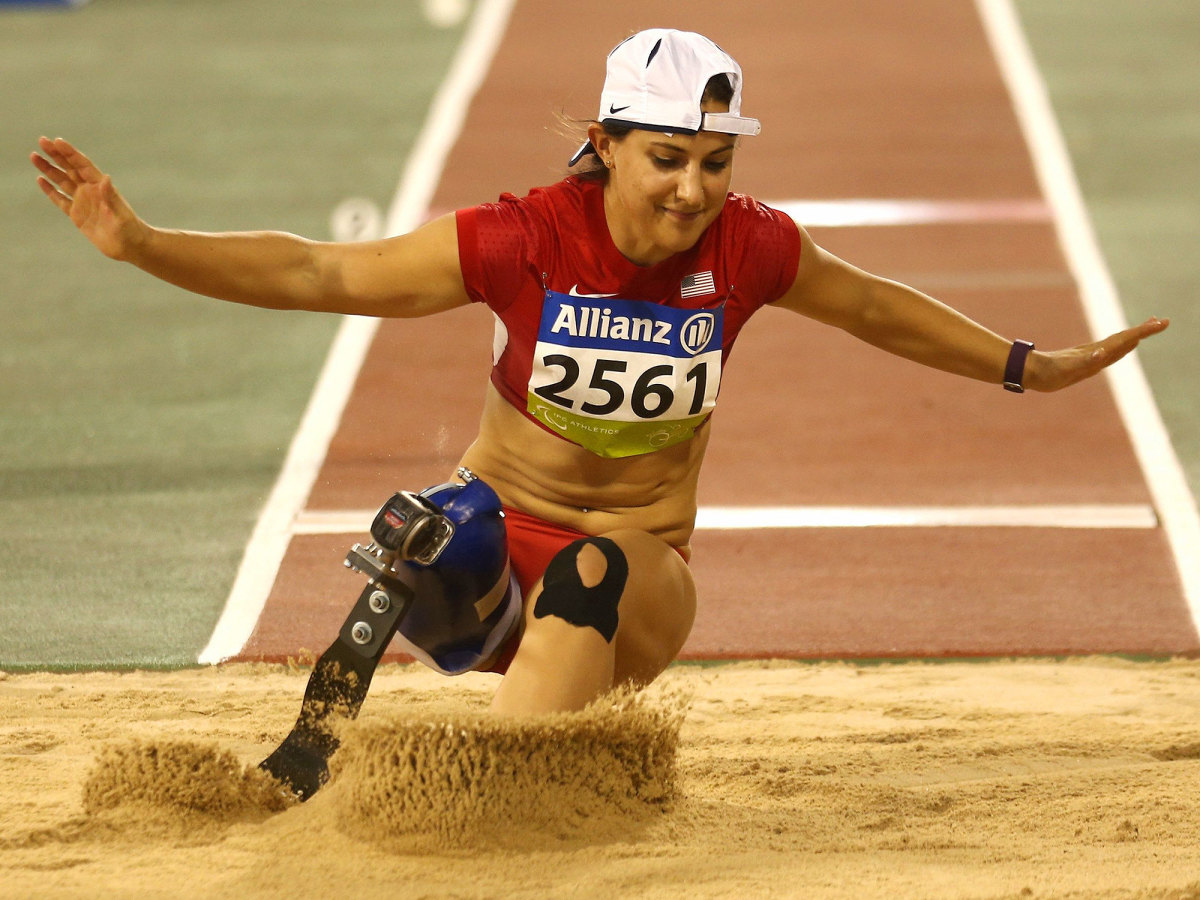Paralympics a source of inspiration, advanced technology and (yes) doping

Every two years the sports world is treated to a celebration of exceptionalism—the summer and winter Olympic Games—followed by a festival of inspiration—the Paralympics—a few weeks later. But does the popular representation of the Paralympics reinforce stereotypes of those with disabilities?
Born in 1948 as an annual competition for World War II veterans with spinal injuries at Stoke Mandeville Hospital in Aylesbury, England, the first official quadrennial Paralympic Games were held in Rome in 1960. In the 56 years since, the Paralympics have evolved from a competition for wheelchair athletes to a major international sporting event. Some 4,350 athletes, from more than 160 countries, will compete in Rio. In 1960, everyone was guaranteed a medal. In 2016, most will go home empty-handed.
The visibility of disability sports has been boosted recently with the introduction of events like the U.S.-based Warrior Games and the international Invictus Games, for injured military service personnel. At the closing ceremonies of the 2012 Games, International Paralympic Committee (IPC) president Sir Philip Craven recounted the story of a five-year-old boy, George Glen, whose response to seeing a peg-legged pirate in a children’s book was to say to his mom, “Well he only has one leg, so he must be an athlete.”
• MEET TEAM USA: Chuck Aoki, Lex Gillette, more Paralympians
Last September, when BP named the U.S. athletes that it would sponsor ahead of Rio, it chose two Olympians and five Paralympians. And NBC is significantly expanding its coverage this year from 5.5 hours in London to 66 hours for Rio.
“Ideally we would just be treated like any athlete,” says Alana Nichols, a multisport athlete who first won gold with the U.S. wheelchair basketball team at Beijing in 2008, then five more medals in skiing in Vancouver and Sochi. “We would be given honest critical feedback about our athletic performance, and not put into this box of inspiration, exception, and other.”
Kelly Crowley, who won two gold medals in swimming relays at Athens in 2004 and two bronze medals in cycling in London in ’12, has watched the growth of disability sports over the last decade. “There’s a lot of discussion in the disability world about this concept of ‘super crip’ and the idea of marketing Paralympic athletes as these amazing, extraordinary, super humans,” she says, “and there’s a lot of push back against that … but part of me wants to go, But that’s how we market the Olympics.”

“I thought disabled sports were for people who didn’t know how to play real sports,” says Nichols, who grew up playing softball, basketball and volleyball. She had hoped to get a college softball scholarship before she broke her back trying to land a backflip on a snowboard in November 2000, leaving her paralyzed from the waist down. When it came to disability sports, Nichols thought, I’m a fast-pitch softball player. Don’t talk to me about adaptive sports.
A chance encounter with a five-on-five game of wheelchair basketball in the gym at the University of Arizona in 2002 convinced her that disability sports were not just an activity to keep disabled people busy—the game was aggressive, even violent. Three years later Nichols was named to the U.S. national team. After Beijing in 2008, she started skiing, and she won two gold medals in Vancouver two years later. A bad crash in the Super-G in Sochi convinced her to try a different sport, and so in Rio, Nichols is hoping to add to her medal haul in sprint kayaking—in the sport’s Paralympic debut.
Katie Holloway, a two-time silver medalist with the U.S. sitting volleyball team, also had preconceptions of disability sports. This is so disabled, she thought the first time she played sitting volleyball. It was her sophomore year of college.
Born without her right fibula, Holloway had her foot amputated when she was just 20 months old, but she went on to play Division I basketball for California State University, Northridge. After being bullied in middle school, Holloway had taken to hiding her prosthesis underneath high socks, and she never talked about her disability with her Matadors teammates.
Parting thoughts from 2016 Rio Olympics
A 6' 4" center from Lake Stevens, Wash., Holloway chose a D-I basketball school because she wanted to know if she could compete at that level. “In college I asked my coaching staff to hold me to the same standard as the rest of the girls. And so I had to make the running times. I had to do everything that they had to do,” she says. Her family’s insurance wouldn’t cover an artificial leg designed for running, so she trained in one built for walking. “Was I behind? For sure. I was always the last one,” she says. And still, Holloway went on to win Big West honors every year, finishing her college career second all-time at CSUN in field goal percentage (.532) and blocked shots (110).
In March 2005, Holloway accepted an invitation to a U.S. sitting volleyball training camp in Atlanta. The sitting volleyball court had been set up in the middle of a national volleyball tournament in the Georgia World Congress Center. “I had to take my leg off in front of hundreds of people, of strangers, and play this sport,” she says.

In 2002 the Commonwealth Games began to incorporate disability events alongside able-bodied ones. There were 10 such events in Manchester in 2002, 12 in Melbourne in ’06, 15 in Delhi in ’10, and 22 in Glasgow in ’14. At the 2018 Gold Coast Commonwealth Games in Australia there will be 38.
While the IOC and the IPC signed a deal in 2001 that required cities bidding to host Olympic bid cities to also host the Paralympic Games, the two events are not held simultaneously. The precedent set by the Commonwealth Games raises this question: If the Olympics and Paralympics are truly equal shouldn’t they take place in the same city at the same time?
The lasting memories of the 2016 Rio Olympics will be of Katie Ledecky and Michael Phelps, Usain Bolt, Mo Farah and Simone Biles, and North and South Korean gymnasts taking a selfie together. But most fans have already archived those memories, preventing Paralympians like 19-year-old Brickelle Bro from joining that list. Born without legs below the knee and with holes in her heart that have now healed, Bro was told to expect to spend most of her life in a wheelchair.
“When I was younger I did ballet. I loved ballet until I couldn’t find my toes. When we got into toe pointing, I was like, ‘Hmmmm,’” Bro says. “Now I’m walking, bicycling. I don’t like running, but it’s not because I don’t have feet. It’s because running is hard.”
A win at the whistle: Against all odds, Rio de Janeiro pulls off the Olympic Games
Bro grew up swimming against able-bodied athletes, and finished fifth in the 400-meter freestyle at the London Paralympics. When she began applying to college she had hoped to find a school she could swim for. Most college Paralympians have to train with local club teams, but with this summer’s Games in mind, Bro was looking for the edge that working with a varsity able-bodied team might offer. Out of the eight schools Bro contacted, just one coach, Stanford’s Greg Meehan, offered her that chance.
Last season, as a freshman, Bro set a U.S. record for paralympic swimmers in the 1,650-yard freestyle at the Pac-12 championships, where she also competed in the 200 and 500 freestyle against able bodied swimmers. Now she heads to Rio. “Just because people think that you can’t do stuff doesn’t mean that they’re right,” she says.
Lacey Henderson, a right leg amputee sprinter and long jumper, was the first para-athlete to train at Altis, a facility for elite track and field athletes in Phoenix. When Henderson showed up in 2015, her coach Dan Pfaff, who had been director of track and field at the USOC’s training center in Chula Vista, Calif., and had coached Canadian gold medal-winning sprinter Donovan Bailey, said to her, “I’m just going to have you do what everybody else does until you can’t. And then we’ll just go from there.”
Two years ago Crowley, the Paralympic swimmer and cyclist, founded an organization called the ParaSport Institute to foster the development of parasport champions. Born with a deformed right arm—a fused right elbow, shortened forearm and missing two fingers—she says she has rarely thought of herself as disabled, but adds, “I will wave that flag for the sake of the kids who don’t know the opportunities that are available to them, because it will change their lives.”
“Whether or not they decide to be Paralympians is totally not even the point,” Crowley says. “It’s more that they deserve to look at the world and think I might be somebody to someone. I might have a career. I might be able to provide for my family. And sport can teach those lessons. And we know that because that’s the argument everybody makes for every other kid playing every other sport.”
Doping is an overwhelming issue in the Olympics, but what about in the Paralympics?
Just after the 2012 London Olympics had come to a close, after the world had witnessed the wonder of Bolt, Phelps, the Fierce Five and countless others, British broadcaster Channel 4 announced that it was now time to: “MEET THE SUPERHUMANS.” Four years later we are about to meet more superheroes, athletes who have overcome obstacles most of us will never face. There is the blind sprinter who runs 100 meters in less than 11 seconds—a time that would have placed him in the middle of the Olympic field in London in 2012. And the amputee swimmer who is fast enough on a single leg to outpace two-legged swimmers in the marathon swim in Beijing in ’08. There are the wheelchair basketball players who hit threes from 22-feet out into the same hoop, 10 feet off the hardwood, that their able-bodied brethren aim for, but they do it while dribbling and maneuvering their chairs with their hands.
Where the Olympic Games sometimes threaten to betray their ideals with doping scandals, political meddling and spoiled superstars, the Paralympics offer a purer, more honorable Games.
Or do they?
The Paralympics are organized around a complex classification system. The goal is to ensure fair competition between athletes of comparable ability. Athletes are first grouped into three broad categories according to their impairment—visual, physical or intellectual—and then broken into smaller classes in an attempt to ensure competitive balance. For example, there will be 16 men’s and 14 women’s 100-meter finals at the Rio Paralympics.
“It’s similar to weight classifications in wrestling,” says David Legg, a professor of physical education and recreation studies at Mount Royal University in Calgary, and a former president of the Canadian Paralympics Committee. “We’re trying to make our groupings as broad as possible, but still fair, so that we can incorporate as many different people with different disabilities.”
Let Rio be Rio: Don't be so quick to judge the Olympics' big step into developing world
But the Paralympic system also creates opportunities for athletes, whether intentionally or not, to be misclassified. At the turn of this century Spain dominated intellectual disability basketball. Within a span of just two years, the Spanish national team won the world championship (Brazil 1998), the Copa Ibérica (Portugal ’99), and the European championship (Poland ’99). The team capped its run with gold at the 2000 Paralympic Games in Sydney, where it was undefeated in five games, winning by an average of 36.4 points. It was later discovered, however, that the 1998 team included four players who had no disability at all. The 1999 team had nine, and by Sydney, 10 out of 12 players were fichajes—ringers.
Why? “Sin medallas, no hay dinero,” basketball team director Eduardo García said at the time. Without medals there is no money. The Spanish delegation to the 2000 Games had raked in $8.3 million, including $2.7 million from Telefónica, a communications firm; $1.4 million from ONCE, a Spanish foundation for the visually impaired; and $1.4 million from the Spanish sports council.
Fernando Martín Vicente, president of FEDDI, the Spanish federation of intellectual disability sports, sought out little known able-bodied athletes from rec leagues to fill his rosters. His mistake was recruiting Carlos Ribagorda—unknown to Vicente, Ribagorda was a journalist. Ribagorda brought the scheme tumbling down with an exposé in the December 2000 issue of the Spanish magazine Capital. Intellectual disability sports, which debuted at the Atlanta Games in 1996, were dropped from the next two Paralympics and ID basketball has not returned. In October 2013, Vicente was found guilty of fraud by a court in Madrid, fined $6,200, and ordered to return over $160,000 in government subsidies.
Even now, a decade and a half after the Spanish case, suspicions remain that not all athletes are playing fair. “We have people in sitting volleyball who have played beach volleyball for 15 years,” says Holloway. “Somehow they are now Paralympians playing sitting volleyball.”
Brazilian Fred Souza, who played on the FIVB beach volleyball world tour between 1995 and 2006, and in the AVP beach volleyball league between ’00 and ’12, was an alternate for both Brazil’s indoor and beach volleyball teams at the 2004 Athens Olympics. Souza, who is 6' 7", is now classified as minimally disabled, a designation that can apply to a player with, say, a missing toe or a severe ACL injury. Each team is allowed only one minimally disabled athlete on the court at a time. But in some cases, one person can make a world of difference. Souza won seven points in Brazil’s gold-medal-winning victory over the U.S. in sitting volleyball at last year’s Parapan Am Games in Toronto. His 75% spike success rate led both teams by more than 30%. This doesn’t mean that Souza does not have a long-term chronic injury that prevents him from playing able-bodied volleyball, but his case has brought up questions of fair play.
California Gold Rush: Los Angeles makes its case for hosting the 2024 Olympics
Much like the Olympics, the Paralympics have not been immune to doping scandals. Most recently, Russia’s Paralympic team was barred from competing in Rio because of its participation in a state-sponsored doping program, a harsher punishment than was imposed on the country’s Olympic team last month.
There are performance-enhancing techniques that are unique to Paralympians. In “boosting”—autonomic dysreflexia (AD)—athletes with spinal cord injuries at or above the sixth thoracic vertebra, roughly nipple height, can raise their heart rate and blood pressure by intentionally injuring themselves. Signals from pain (clamping a catheter, sitting on a thumbtack, or even breaking a toe) travel high enough up the spinal cord to trigger a physiological fight-or-flight response, but the pain itself is never registered in the brain. So, the athlete never feels the injury. It is a simple, brutal, way to gain an edge, though it can have serious side effects, including stroke and death.
Robert Burnham, a clinical professor of physical medicine and rehabilitation at the University of Alberta, intentionally induced AD in eight elite quadriplegic wheelchair racers in a 1993 study, published in the Clinical Journal of Sport Medicine. He found that boosting could improve race times over a 7.5-kilometer course by 9.7%.
Rating NBC's complete multi-platform coverage of 2016 Rio Olympic Games
Boosting was banned by the IPC in 1994, but in a small, anonymous survey in 2009, 10 of 60 respondents with spinal cord injuries above T6 said they had intentionally induced autonomic dysreflexia to boost performance. One person said he boosted all the time during national and international competitions. Nichols, whose spinal injury is too low to even consider boosting, says she has heard rumors of athletes using the tactic but doesn’t know anyone who has. “It’s terrible—but from what I understand it helps their performance,” she says.
Boosting can be detected by measuring an athlete’s blood pressure immediately before competition. “When your blood pressure is too high, and you do not have a clinical record of hypertension, you will be disqualified,” says Peter Van de Vliet, the medical and scientific director of the IPC. “[But] when it happens, it does not necessarily mean that the athlete did it on purpose, that it was intentional.” Because these athletes do not feel pain in the lower half of their bodies, they could accidentally induce AD.
The IPC has never caught anyone intentionally boosting. Athletes randomly tested in Beijing in 2008 (37) and London in 2012 (41) all had blood pressure readings below the systolic limit of 180 mm Hg. However, on May 3 the IPC announced that the rules for Rio would be tightened, dropping the maximum to 160 mm Hg.
If Olympians will push their bodies to the breaking point, so will Paralympians. “We aren’t going to the Paralympics to participate,” says Nichols, who will look to add to her wheelchair basketball and alpine skiing medals in sprint kayaking in Rio. If Olympians will forgo common sense and put their personal lives on hold in the pursuit of winning, so will Paralympians. “We’re going [to the Games] to win, “ she says, “and a gold medal means just as much to somebody without legs as it does to an able-bodied competitor.” If Olympians will bend and break the rules in search of fame and success, so too will Paralympians.
In a world of superheroes, there must also be supervillains.
Can technology make para-athletes better than able-bodied athletes?
In 2008, double amputee Oscar Pistorius of South Africa successfully lobbied for the right to race on carbon fiber blades in IAAF events, including the Olympic Games. Four years later he became the first amputee to run against able-bodied competition at the Olympics when he competed in the 400 meters in London. This year German long jumper Markus Rehm attempted to qualify for the Rio Olympics, but officials, concerned that his artificial leg conferred an unfair advantage, did not permit him to compete.
Half a century after the first Paralympic Games, in Rome, in 1960, the distinction between disability and ability is disappearing.
Rehm, a right-leg amputee, won gold in the long jump at the London Paralympics and will be back to defend that title in Brazil. Last October he set the world record in his disability classification, jumping 8.4 meters, just 21.5 centimeters short of the able-bodied world record (set in 1991 by Mike Powell) and nine centimeters longer than the gold medal jump of Great Britain’s Greg Rutherford in London. A study Rehm commissioned found that amputees had less efficient run starts but more efficient jumps. Since the IAAF requires proof of no advantage, the finding worked against Rehm’s case. “The ability of a prosthetic limb to be considered better than a ‘human’ limb,” says Legg, “well, what does that lead to?”
Some athletes already risk their long-term health by taking powerful performance-enhancing drugs but would any go so far as to replace a limb to find an edge?

In theory, an athlete could switch out a prosthesis for one that might be better suited to a specific action, according to Ranjit Steiner, who had his right leg amputated six years ago because of bone cancer. Now working at LIM Innovations, a company that makes prosthetic sockets, Steiner has set his sights on running track at the Tokyo Paralympics in 2020. “You’re changing out the components,” he says, “or you’re changing out the height or whatever for different activities.”
Increasing leg length has two competing effects on running biomechanics. While stride length increases, the runner’s turnover rate typically decreases because longer legs are heavier. Speed, therefore, doesn’t necessarily increase. But the Össur Flex-Foot Cheetah running blade, the prostheses Pistorius used in London, weighs just 1.13 pounds. A rough estimate based on population averages suggests that each of Pistorius’s natural legs below the knee should actually weigh at least 10 times that much. Amputee sprinters can therefore increase stride length with minimal impact on turnover, boosting their top speed.
The IPC has regulations that restrict an amputee’s maximum height—using parts of the body, including wingspan, to determine what natural height might be—but accusations that amputees are gaining an unfair advantage persist. At the London Games, Pistorius finished second in his 400-meter heat but last in his semifinal. One month later, chasing a third-straight Paralympic 200-meter gold, Pistorius was beaten by double-amputee Alan Oliveira of Brazil. Despite a slow start, the then 20-year-old Oliveira, who had switched to taller blades (by four centimeters) just three weeks before the Games, cruised by Pistorius at the line. “We’re not racing a fair race here,” Pistorius said immediately afterwards. “The IPC have their regulations, but the regulations [allow] athletes to make themselves unbelievably high.” Despite Pistorius’s objections, Oliveira’s prostheses were within IPC rules.
According to Peter Van de Vliet, the current medical and scientific director of the IPC, the rules governing maximum height have been re-evaluated since London and will change again after Rio. “The new formula ... in effect will mean that the athletes will be less tall,” Van de Vliet says.

Henderson, who had her right leg amputated when she was nine because of a soft-tissue tumor, often competes against double-amputees. “It’s getting a little crazy,” she says. “These girls are tall. You’re looking at them eye level when you’re walking, and when they put on their racing legs, they’re almost a foot taller than you.”
As a single-leg amputee, Henderson’s height is fixed, arguably putting her at a disadvantage in events that include both single- and double-amputees. But do single-amputees Henderson and Rehm, with their lighter-than-natural carbon-fiber legs, have an advantage over athletes with two legs made from flesh and bone?
Maybe, says Robert Riener, Head of the Department of Health Sciences and Technology at ETH Zurich, a university in Switzerland. Still, the idea that an able-bodied athlete would choose to replace a biological limb with a mechanical one is far-fetched. Riener is the brains behind the Cybathlon, an event that mixes an XPRIZE-like engineering contest with an athletic competition. The ultimate aim is to drive innovations in biomechanical science and increase accessibility for those with disabilities.
“[Rehm] might be better performing with his prosthetic leg, when compared to other [able-bodied] athletes,” Riener says. “But when you see him walking, he has a very asymmetric gait.” Unlike able-bodied athletes, Rehm cannot generate power from muscles in his lower right leg, and motorized prostheses are not allowed in either the Olympics or the Paralympics. Even with a gold medal at stake, Riener believes that no one would sacrifice a healthy leg for a faster 40 time.
Riener’s goal is to solve the problems created by all types of disabilities. “At the Paralympics, powered devices are not allowed,” Riener says, “and that automatically excludes, for example, tetraplegic patients because they cannot move their arms or feet.” Among the events at the Cybathlon this fall will be a video-game race in which competitors control avatars by brainwaves, and a recumbent bike race in which electrical stimulation engages paralyzed riders’ muscles so they can pedal bikes around a track.
This year, the Cybathlon is scheduled to take place in Zurich a month after the Rio Paralympics. Riener hopes, in 2020, to hold the Games of the II Cybathlon in Tokyo after the Games of the XVI Paralympiad. Who knows, by 2028 or ’32, perhaps there will be only one Games, for competitors of all abilities—or disabilities?
